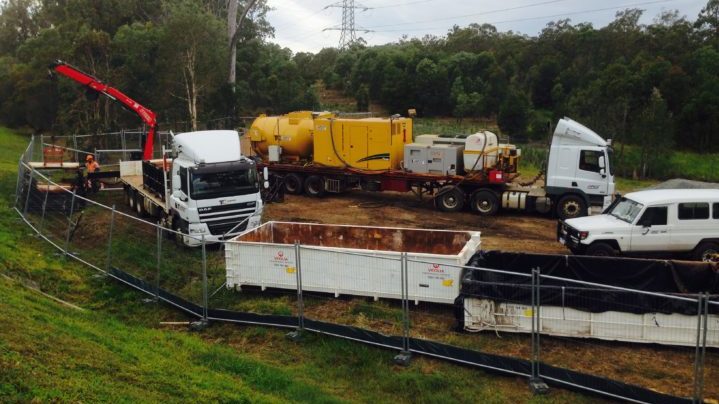Microtunnelling
Edge Underground has always been an innovator in the field of microtunnelling, and two recently completed projects highlight the fact that Edge is a company that’s always willing to push the boundaries of what trenchless technologies can achieve.
Under the beaten track WITH MICROTUNNELLING
Working with Gippsland Water on its $13million Warragul sewer upgrade, Edge Underground completed the delicate process of burrowing more than 100 metres underneath Princes Way and a railway line to make way for a new wastewater pipeline in Drouin, Victoria.
The 4km sewer line will allow residential and industrial properties near Burke and Howitt Streets to finally be connected to the sewerage system, rather than relying on septic tanks.
The new sewerage system will also cater to expected future growth in the Warragul region.
The job involved almost 1,500m of microtunnelling, ranging from 324GRP to 711GRP.
“The ground conditions and this risk of failure led to Gippsland Water and their consultant, GHD, to specify for slurry and displacement microtunnelling,” said Edge Underground Founder and Managing Director Stuart Harrison.
“We discussed the capabilities of the Vermeer AXIS vacuum microtunnel method, and Gippsland Water and GHD liked what they heard. It was the ability of the system in a wide range of conditions, ranging from clays with a range of gravel and cobbles to wet running sands, the really impressed our partners.”
Many challenges had to be overcome in order to deliver a tight tolerance in vastly changing ground conditions. The use of a 350mm pilot shot as a form of a geotechnical sample proved to be a significant factor in delivering a successful project without requiring any additional shafts. The lines ranged from 40-150m in length.
The works, which follow more than two years of planning and design in consultation with VLine and VicTrack, were successfully completed by Edge Underground over two nights without any impact to train services.
The benefits that Gippsland Water and the local community have seen thanks to the innovative use of microtunnelling cannot be understated.
“We have now successfully completed two of the three critical sections of this final phase of the $13million Warragul central trunk sewer replacement project,” said Paul Clark, General Manager of Customer Service and Communications at Gippsland Water.
“This investment allows for future development of the Warragul township along with fast-growing areas to the west and south of Warragul,” Mr Clark continued.
“Previously unsewered properties close to the Warragul CBD will also be serviced,” he added.
“We’re delighted to be close to finishing this major project for the Baw Baw and Warragul community. It will allow for future growth and prosperity in the region as well as provide a more reliable and efficient sewerage solution for our local customers,” concluded Mr Clark.
The new sewer main also has the capacity for emergency storage within the pipeline system which means Gippsland Water is able to decommission two existing pump stations currently located on the western edge of Warragul.
Howitt Street is the next major set of works to be conducted as part of the project, with the entire 4km stretch of new underground sewer main is on track for completion in June 2015.
Trenchless wins out
In recent years, Townsville City Council has also been working with Edge Underground and the Vermeer AXIS vacuum microtunnelling system. The system has been used on a number of projects, including the recent Corbett Street Trunk Sewer Extension project.
The project involved the supply and construction of approximately 450m of 300mm gravity sewer, from the existing 300mm sewer on the southern side of Ingham Road through to the existing 300mm sewer on the southern side of Woolcock Street.
The project involved microtunnelling under Woolcock Street and the North Coast Railway Line, which was completed by Edge Underground using the Vermeer AXIS system.
Stuart Harrison said that the results achieved by the innovative system have impressed the council, and inspired them to utilise microtunnelling as an installation method more than ever before.
“So popular has the system been that as a result, projects which previously would have been completed by traditional open cut installation methods are now being mictrotunnelled by choice,” said Stuart.
“It’s exciting to see that councils and utilities are starting to really appreciate and enjoy the social, environmental and economical benefits microtunnelling can offer.”
Projects that Edge Underground has completed for the council involve pipes ranging in diameter from 150-600mm, and ground conditions have ranged from sand, sandy silty clays and rock. All of the projects that Edge has undertaken have been completed within tolerance, on time and on budget.

